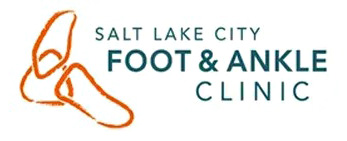Foot Ulcers services offered in Holladay and West Jordan, UT
If you have an open or non-healing wound, see the experts at Salt Lake City Foot and Ankle Clinic in Holladay and West Jordan, Utah. Foot and Ankle specialister, podiatrists, Christiaan Goebel, DPM, Weston Packard, DPM, and their skilled team offer an array of treatments for foot ulcers to speed up healing and reduce your risk of infection. Call the Salt Lake City Foot and Ankle Clinic office or use the online booking feature today. We serve all of Salt Lake City and the surrounding communities.
Foot Ulcers Q&A
What are foot ulcers?
Toe and foot ulcers are open wounds that often appear on the bottom of your feet. They may heal on their own over time, linger long-term, or become infected when left untreated. If you have a foot wound, especially if you also have diabetes, see the experts at Salt Lake City Foot and Ankle Clinic as soon as possible.
What are the symptoms of foot ulcers?
Common signs and symptoms of foot ulcers include:
- Open wounds
- Non-healing wounds
- Open sores
- Slow-healing sores
- Painful sores
- Swelling
- Itching
- Burning
- Pus
- Drainage
- Redness
- Blistering
- Discoloration
About 15% of people with diabetes develop ulcers, often on their feet. Don’t wait to see your specialist. The earlier you do so, the easier foot ulcers are to treat.
What are the risk factors for foot ulcers?
While anyone can develop foot ulcers, risk factors for developing them include:
- Diabetes
- Nerve damage
- Older age
- Excess body weight
- Poor circulation
- Foot trauma
- Toe deformities
- Abnormal gait
- Poor-fitted shoes
- Peripheral artery disease (PAD)
- Heart disease
- Using tobacco or alcohol
The best way to reduce your risk of foot ulcers is to take care of your feet and see the Salt Lake City Foot and Ankle Clinic team at the first sign of a problem. If you have diabetes, have your feet examined by a podiatrist at least once a year.
How does my doctor diagnose foot ulcers?
Your Salt Lake City Foot and Ankle Clinic specialist diagnoses foot ulcers after reviewing your symptoms and medical history. They also evaluate your feet and toes during a physical exam. You might need a blood test, tissue biopsy or swab, X-rays, an MRI, or a CT scan.
How are foot ulcers treated?
Common treatments available at Salt Lake City Foot and Ankle Clinic for foot ulcers include:
- Topical wound care
- Debridement (clearing away diseased tissue)
- Medications
- Bandaging
- Skin grafts
- Drainage
- Custom orthotics
- Nonsurgical off-loading
- Diabetic shoes
- Surgery
You may need more than one type of treatment to ensure the best outcome. Keep your feet clean and dry, take all medications as directed, and attend follow-up visits with the Salt Lake City Foot and Ankle Clinic team to ensure your wounds heal properly.
To get treated for foot ulcers at Salt Lake City Foot and Ankle Clinic, call the office or schedule an appointment online today.
